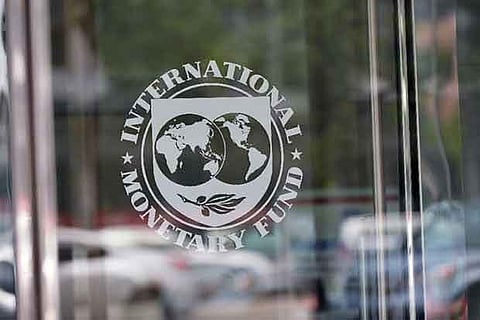

Chennai
Asia continues to be the main engine of the world’s economy, accounting for more than 60 per cent of global growth — three-quarters of which comes from China and India alone, as per IMF’s Regional Economic Outlook: Asia and Pacific (REO). “But there are risks and challenges ahead, including from a tightening of global financial conditions, a shift toward inward-looking policies, and — over the longer run — population aging, slowing productivity growth, and the rise of the digital economy,” it said. Asia is expected to grow at 5.6 per cent this year and next, it said, adding that the outlook is supported by strong global demand, as well as still accommodative policies and financial conditions.
“In India, growth is forecast to rebound to 7.4 percent in FY 2018/19 as the economy recovers from disruptions related to the currency exchange initiative and the rollout of the new Goods and Services Tax,” it said. China, it said, is projected to grow at 6.6 per cent in the current year which will moderate to 6.4 per cent next year. Noting that present rates of inflation in Asia are some of the lowest in decades, it said, it has seen some upward movement since September 2017 on the back of rising oil prices.
“But core inflation — which excludes food and energy — remains low and below target in many economies. In 2017, headline inflation on average was 0.6 percent lower than target in Asian advanced economies, and 0.8 percent under target in Asian emerging market economies,” it said. The latest report explores why inflation has been so low. And it finds that first that temporary global factors, including commodity prices and imported inflation, have been key drivers of low inflation. But these factors could reverse, and inflation could rise.
According to the report, inflation has become more backward-looking, meaning that past inflation drives current inflation more than future expectations. This suggests that if inflation rises, it may persist. “Further, there is some evidence that the sensitivity of inflation to economic slack has decreased (i.e., the Phillips curve has flattened), suggesting that if inflation rises, there may be a large hit to output when reducing it,” it said. All of these mean that central banks should watch out closely for signs of inflation pressure now and stand ready to respond.
Indian economy coming out of twin shock of DeMo and GST: IndRa
The Indian economy is gradually coming out of the twin shock of demonetisation and GST which temporarily derailed growth, India Ratings said. The ratings agency, however, cautioned on the possible widening of the current account deficit (CAD) due to rising oil prices which was creating pressure on the currency. “Our research has shown that major macro parameters like manufacturing, capital goods production, non-food credit and consumption are showing signs of recovery,” India Ratings chief economist Devendra Pant said.
On the monetary side, areas of concern are rising bond yields which indicate potential slippages on the fiscal front, he said. “Things are improving now. If things behave as they are now and the policy remains conducive, growth in current fiscal is expected to be 7.4 per cent”, Pant said. He said it was unlikely that the government would go ahead with big bang reforms due to the 2019 Lok Sabha
elections. If the CAD remained within three per cent, then it would not be alarming for the economy provided capital inflows were in excess of outflows caused by high oil import bill. “In that case, the rupee will have an appreciating bias” he said.
Visit news.dtnext.in to explore our interactive epaper!
Download the DT Next app for more exciting features!
Click here for iOS
Click here for Android